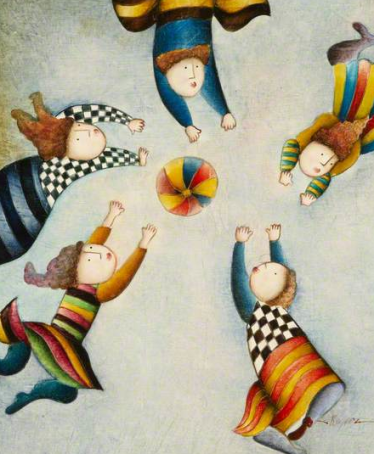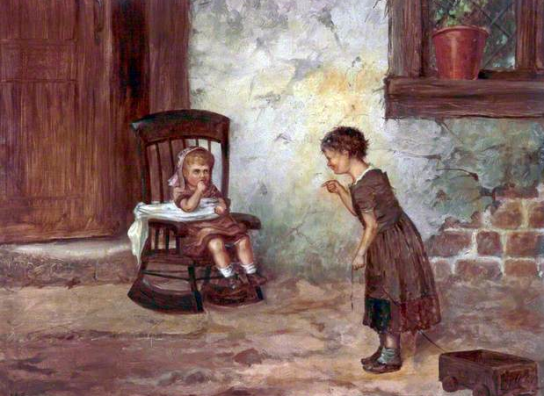A recent news item on the Nature web site discussed a ‘severe publication bias’ in the Social Sciences:
‘When an experiment fails to produce an interesting effect, researchers often shelve the data and move on to another problem. But withholding null results skews the literature in a field, and is a particular worry for clinical medicine and the social sciences.’
This can also be a problematic issue in historical research, if sufficient data or sources are unavailable, then the project or research questions are often non-starters and, as with the Nature article’s findings, does the historian turn to different questions and projects where sources are available and thus leave the more difficult questions unanswered? Of course with digitisation more historical sources than ever are easily searchable and more accessible. Online blogging has multiplied the visible literature on a huge range of topics. I have spoken widely and written in JVC Online about the lack of sources regarding institutionalised sexual abuse of children in the Victorian period. It remains my research ‘elephant in the room’ and although answers will probably continue to elude me I will not stop posing the questions.
Five Children Playing Ball by Joyce Roybal
I have found no evidence of institutionalised sexual abuse in any of the Victorian and Edwardian children’s homes I have researched. There have been reports of inappropriate behaviour by male and female teachers and plenty of evidence of over-enthusiastic corporal punishment. Some children were removed from abusive families and taken into institutions. It appears that other historians of children have not found sexual abuse in Victorian institutions and although there is excellent scholarship concerning abuse in the home and on the street, the abuse of institutionalised children is a neglected area.
Silence of course not mean institutionalised sexual abuse did not happen, only that it was not reported in the sources that survive.
Today we are assailed by horrific reports of institutionalised sexual abuse, especially of vulnerable children in local authority control. The sickening abuses in Rotherham have followed the Savile and Yew Tree investigations and the 1990s historic child abuse inquiries. It seems as if children ‘in care’ have been, are being and will be sexually abused.
So, if this horror happens in today’s liberal society it must have been much worse in the grim Victorian period of gruel, the birch and child chimney sweeps?
Or, can it be possible that Victorian child rescuers looked after their children better? Were these children less vulnerable that the ‘looked after’ children of today and the last 30 years’? Abusers target the defenceless and Victorian children were sent to various children’s homes that were open to public and press inspection and were also under scrutiny by volunteers who took their responsibilities very seriously. The Victorian period was called ‘the age of the inspector’ for a very good reason and I demonstrate below using Swansea’s Cottage Homes which were built in 1877 to house Swansea’s pauper children who were under the care of Swansea Poor Law Union.[1]
Swansea Cottage Homes
A child who lived in these cottage homes would be in the charge of a female matron in a cottage with around a dozen other children. Christian Wolmar has argued that a major cause of abuse in residential care homes was the replacement of women caregivers by men.[2]
They attended the local school where they were seen regularly by schools inspectors, clergymen and the teachers. The homes were regularly scrutinised by poor law inspectors who wrote frank and critical reports. Local poor law guardians (including women from the 1890s onward) visited in groups around twice a week and the doctor attended weekly. Within the extensive medical reports, there was no mention of a child with non-congenital venereal disease, an indicator of historical sexual abuse.[3]
Local ladies visited and offered treats, outings, holidays and provided special teas. The homes were open for relatives and friends of the children to visit them. There were reported instances of mistreatment, cruelties and excessive punishments, but this was not condoned by local poor law guardians or the poor law central authorities. Similarly, children were encouraged to speak out about any bad treatment and there is evidence that they did this.
Victorian Children Playing by J.C.B
Many establishments around Britain offered the same levels of inspection and protection; it was much more difficult to conceal abused children, and although there were no CRB checks, paedophiles would have known that these children were heavily protected and I believe they were considerably less vulnerable than children in residential care in the past.
This post has only briefly touched upon this complex and disturbing subject, for more in depth analysis see my article in the Journal of Victorian Culture Online ‘The elephant in the room: Questioning the absence of paedophilia in children’s histories’ here.
Please contact me if you have any evidence concerning institutionalised sexual abuse of Victorian children.
[1] William Burne, ‘Age of the inspector’, in Martin Hewitt, ed., An Age of Equipoise?: Reassessing Mid-Victorian Britain, Aldershot; Burlington, Vt.: Ashgate, 2000, 17.
[2] Christian Wolmar, ‘The untold story behind child abuse’, The Guardian, 16 February 2000.
[3] Carol Smart, ‘Reconsidering the Recent History of Child Sexual Abuse, 1910–1960’, Journal of Social Policy, 29:11 (2000), 55–71, 57-59.


Reblogged this on Pauper Children and Poor Law Childhoods.
Really interesting post Lesley and certainly makes you think about how you report silences. Perhaps sometimes we are always too busy looking for links. Nevertheless your post reminded me that Mary Sheepshanks’s unpublished autobiography in LSE argues that victorian/ Edwardian institutions would not have been spaces for child abuse. Will have a look for the exact quote if you want (hope I made a note of it as I found her argument intriguing). In terms of finding case of child abuse I wonder if this is an example of when clergy disciplinary cases would be interesting to consult. For instance i remember a case of child abuse occurring in 1850/60s between clergyman and choir boys when i was a research assistant at Lambeth Palace.
Thanks for your fascinating comment Lucie, I would love to see more of Mary Sheepshanks’ words. Your point about the clergy is very interesting, the chaplain in workhouses was an important figure who tested children on their Catechism and will be another avenue of investigation -many thanks!
I realise there will be children who were sexually abused, but I wonder whether that was the same as the institutionalised abuse of vulnerable children we have heard about in the last few years.
Is there an echo of worrying elements in recent reports, in Freud’s ultimately attributing women patients’ (with respectable bourgeois backgrounds) recollections of sexual abuse to hysterical fantasy? Do any of the sources contain references to charges or claims dismissed? Is it possible that claims dismissed as absurd were deemed too horrible or slanderous to record? Is than an area where inference from silence is more dubious than usual?
Many thanks for your comment Adam. I have wondered myself whether charges of sexual abuse would be recorded for the same reasons. Euphemisms such as ‘outrage’ were often used by organisations such as the NSPCC when they were talking about sexual abuse. I have looked carefully for this and also instances of VD but have found none.
Silence could mean anything from an institutionalised acceptance of abuse (De Mause) to a complete lack of abuse and every variation in between.